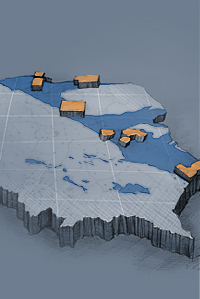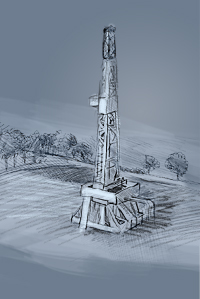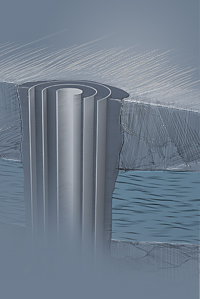Trade and Storage
In 2011, sales of natural gas were 14.4 bn m³. The gas was supplied to PGNiG’s 6.6 m customers, including households and industrial customers. Approximately four thousand of PGNiG employees worked on ensuring an uninterrupted and secure service.
Key Events in 2011
- Launch of new intersystem connectors to the Czech gas system in Cieszyn; increase of the throughput capacity of the two-way connection to the German system in Lasów; launch of reverse flow on the Yamal Pipeline (virtual reverse flow).
- Instigation of arbitration proceedings against Gazprom and Gazprom Export before the Arbitration Tribunal of Stockholm.
- Amendment of the Act on Stocks of Crude Oil, Petroleum Products and Natural Gas, as well as on the Rules to be Followed in the Event of Threat to National Fuel Security or Disruptions on the Petroleum Market, providing for the possibility to maintain mandatory reserves outside Poland and to exempt a company from the obligation to keep mandatory stock if the number of its customers does not exceed 100 thousand and the natural gas volume imported in a calendar year is up to 100 m m³.
The Trade and Storage segment sells imported natural gas and natural gas produced from domestic fields. Imported gas is sourced mainly from countries lying east of Poland (65% of demand), with gas volumes imported from countries to the west and south of Poland (approximately 11%) steadily increasing. Natural gas is sold through the distribution and transmission networks, and its sale is regulated by the Energy Regulatory Office (URE). For its own needs, the segment uses three underground gas storage facilities (in Husów, Mogilno and Wierzchowice).
Financial Performance in 2011
Operating profit of the Trade and Storage segment fell PLN 999.3 m relative to 2010. The segment closed 2011 with an operating loss of PLN −183.8 m. The weakening of the segment’s financial position came as a result of the significantly lower profitability of high-methane gas sales, caused mainly by a 24% rise in the unit purchase price of imported gas, driven by higher crude oil prices on the global markets. The increase in costs would have been much higher, had it not been for discounts obtained in December 2011 under the existing import contracts, and increased gas deliveries from countries to the west of Poland in the fourth quarter of the year. The margins on high-methane gas sales deteriorated despite a 5.7% year-on-year increase in the average gas selling prices and charge rates. The benefits offered by the new tariff (effective as of July 2011) were completely eliminated by the strong depreciation of the Polish złoty, pushing profitability of high-methane gas sales below the break-even point.
Tariff Policy
Gas fuel trading is regulated by the President of URE. The URE’s regulatory powers include the right to approve gas fuel tariffs, including gas fuel prices and charge rates stipulated in the tariffs, and control their application in terms of compliance with the Polish Energy Law; to analyse and review costs which energy companies consider relevant for the calculation of tariff prices and charge rates; and to exercise overall supervision over energy companies. The tariff prices and charge rates are key drivers of PGNiG’s financial performance. The methodology applied to prepare tariffs is based on the determination of prices and charge rates against forecast costs and gas sales targets, and the calculation takes into account the costs of gas from all sources, i.e. both imported and domestically produced gas.
PGNiG supplies gas fuel to customers connected to the transmission grid and those connected to the distribution network, under comprehensive contracts settled based on the tariff, which specifies:
- prices, subscription fees and rates of network charges applicable to settlements with customers receiving gas fuel from the transmission grid;
- prices, subscription fees and rates of network charges applicable to settlements with customers receiving gas fuel from the distribution networks;
- the manner of determining price reductions for failure to maintain the quality parameters for gas fuels and quality standards in customer service, and the manner of determining charges for exceeding the contracted capacity.
The gas fuel tariff in 2011 (high-methane gas prices – type E) was as follows:
- From January 1st 2011 to July 14th 2011, the gas fuel price was PLN 982.70 per 1,000 m³, down 3.2% on the previous tariff;
- From July 15th 2011 to March 30th 2012, the gas fuel price was PLN 1,107.3 per 1,000 m³, up 12.7% on the tariff effective in the first half of 2011.
- As of March 31st 2012, the gas fuel price has been PLN 1,294.2 per 1,000 m³, up 16.9% on the previous tariff.




